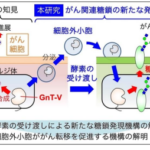2022-12-06 ペンシルベニア州立大学(PennState)
論文では、閉経後の女性235人の骨密度を評価し、そのうちの何人かは、毎日50グラム(およそプルーン5〜6個)または100グラムのプルーンを1年間食べ続けるよう割り当てられた。研究者たちは、女性たちの骨密度、骨形状、推定骨強度を測定し、プルーンが有益である可能性を示す証拠を発見した。
プルーンを摂取することで、股関節の体重がかかる部位の骨量密度と強度が保たれることが明らかになった。プルーンを食べなかった女性では、骨密度が1.1%減少しましたが、毎日5〜6個のプルーンを食べた女性では、骨密度の測定可能な減少は見られなかった。また、すねの骨である脛骨(けいこつ)についても、同等の結果が得られたとの予備的な報告がある。
プルーンを1年間食べ続けた女性には、骨に良い影響があることが分かった。特に、脛骨の推定骨強度はプール群で維持され、骨密度は1日5~6個のプルーン群および1日10~12個のプルーン群で維持された。このように、プルーンは特に股関節と脛骨の骨量減少を防ぐのに役立つと思われる。
<関連情報>
- https://www.psu.edu/news/health-and-human-development/story/prunes-may-help-prevent-bone-loss-and-preserve-bone-strength/
- https://academic.oup.com/ajcn/article-abstract/116/4/897/6633654
閉経後女性を対象とした12カ月間の無作為化比較試験において、プルーンは股関節の骨密度を維持した:プルーン研究 Prunes preserve hip bone mineral density in a 12-month randomized controlled trial in postmenopausal women: the Prune Study
Mary Jane De Souza, Nicole C A Strock, Nancy I Williams, Hang Lee, Kristen J Koltun, Connie Rogers, Mario G Ferruzzi, Cindy H Nakatsu, Connie Weaver
American Journal of Clinical Nutrition Published:11 July 2022
DOI:https://doi.org/10.1093/ajcn/nqac189
ABSTRACT
Background
Dietary consumption of prunes has favorable impacts on bone health, but more research is necessary to improve upon study designs and refine our understandings.
Objectives
We evaluated the effects of prunes (50 g or 100 g/d) on bone mineral density (BMD) in postmenopausal women during a 12-mo dietary intervention. Secondary outcomes include effects on bone biomarkers.
Methods
The single-center, parallel-arm 12-mo randomized controlled trial tested the effects of 50 g and 100 g prunes compared with a control group on BMD (every 6 mo) and bone biomarkers in postmenopausal women.
Results
In total, 235 women (age 62.1 ± 5.0 y) were randomly allocated into control (n = 78), 50-g prune (n = 79), or 100-g prune (n = 78) groups. Compliance was 90.2 ± 1.8% and 87.1 ± 2.1% in the 50-g and 100-g prune groups. Dropout was 22%; however, the dropout rate was 41% for the 100-g prune group (compared with other groups: 10%, control; 15%, 50 g prune; P < 0.001). A group × time interaction for total hip BMD was observed in control compared with 50-g prune groups (P < 0.05) but not in control compared with 100-g prune groups (P > 0.05). Total hip BMD decreased –1.1 ± 0.2% in the control group at 12 mo, whereas the 50-g prune group preserved BMD (–0.3 ± 0.2%) at 12 mo (P < 0.05). Although hip fracture risk (FRAX) worsened in the control group at 6 mo compared with baseline (10.3 ± 0.5% compared with 9.8 ± 0.5%, P < 0.05), FRAX score was maintained in the pooled (50 g + 100 g) prune groups.
Conclusions
A 50-g daily dose of prunes can prevent loss of total hip BMD in postmenopausal women after 6 mo, which persisted for 12 mo. Given that there was high compliance and retention at the 50-g dosage over 12 mo, we propose that the 50-g dose represents a valuable nonpharmacologic treatment strategy that can be used to preserve hip BMD in postmenopausal women and possibly reduce hip fracture risk. This trial was registered at clinicaltrials.gov as NCT02822378.



